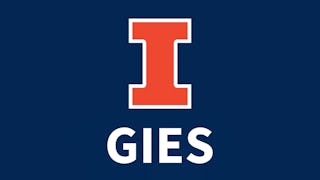The purpose of this course is to help individuals and organizations survive when confronted with disruptive technologies that threaten their current way of life. We will look at a general model of survival and use it to analyze companies and industries that have failed or are close to failing. Examples of companies that have not survived include Kodak, a firm over 100 years old, Blockbuster and Borders. It is likely that each of us has done business with all of these firms, and today Kodak and Blockbuster are in bankruptcy and Borders has been liquidated. Disruptions are impacting industries like education; Coursera and others offering these massive open online courses are a challenge for Universities. In addition to firms that have failed, we will look at some that have survived and are doing well. What are their strategies for survival?

3 days left: Get a Black Friday boost with $160 off 10,000+ programs. Save now.


Surviving Disruptive Technologies (On Demand)

Instructor: Hank C. Lucas
3,053 already enrolled
Included with
(61 reviews)
Skills you'll gain
Details to know

Add to your LinkedIn profile
9 assignments
See how employees at top companies are mastering in-demand skills

There are 10 modules in this course
A Model and framework to help understand disruptive technologies
What's included
4 videos1 assignment
Some examples of companies that were not able to survive disruptive technologies
What's included
3 videos1 assignment
A company that did not survive and its disruptor
What's included
2 videos1 assignment
Another story of disruption and a summary of our examples
What's included
4 videos1 assignment
Newspapers are an important component of a democratic society; the Internet threatens them in a number of ways
What's included
3 videos1 assignment
Social media has transformed the way people relate to each other, but it has a disruptive component that is worrying
What's included
3 videos1 assignment
Two companies in this module are private and are very successful; a quasi-public agency has a hard time competing with them and their technology
What's included
4 videos1 assignment
Conclusions about disruption
What's included
3 videos1 assignment
Suggestions for how to respond to a disruptive technology
What's included
4 videos1 assignment
Survival in the physical world
What's included
1 video
Instructor

Offered by
Explore more from Leadership and Management
 Status: Free Trial
Status: Free TrialUniversidad de Palermo
 Status: Preview
Status: PreviewUniversity of Illinois Urbana-Champaign
 Status: Free Trial
Status: Free TrialUniversity of Illinois Urbana-Champaign
 Status: Free Trial
Status: Free TrialMacquarie University
Why people choose Coursera for their career




Learner reviews
61 reviews
- 5 stars
77.41%
- 4 stars
16.12%
- 3 stars
3.22%
- 2 stars
1.61%
- 1 star
1.61%
Showing 3 of 61
Reviewed on Feb 6, 2022
Very cool to have failures as the focal point for case studies.
Reviewed on Apr 28, 2017
Thanks for offering this course as MOOC on Cursera.
Reviewed on Oct 22, 2019
Thank you for this course make me understand disruption technology and how to survive.

Open new doors with Coursera Plus
Unlimited access to 10,000+ world-class courses, hands-on projects, and job-ready certificate programs - all included in your subscription
Advance your career with an online degree
Earn a degree from world-class universities - 100% online
Join over 3,400 global companies that choose Coursera for Business
Upskill your employees to excel in the digital economy
Frequently asked questions
To access the course materials, assignments and to earn a Certificate, you will need to purchase the Certificate experience when you enroll in a course. You can try a Free Trial instead, or apply for Financial Aid. The course may offer 'Full Course, No Certificate' instead. This option lets you see all course materials, submit required assessments, and get a final grade. This also means that you will not be able to purchase a Certificate experience.
When you purchase a Certificate you get access to all course materials, including graded assignments. Upon completing the course, your electronic Certificate will be added to your Accomplishments page - from there, you can print your Certificate or add it to your LinkedIn profile.
Yes. In select learning programs, you can apply for financial aid or a scholarship if you can’t afford the enrollment fee. If fin aid or scholarship is available for your learning program selection, you’ll find a link to apply on the description page.
More questions
Financial aid available,

